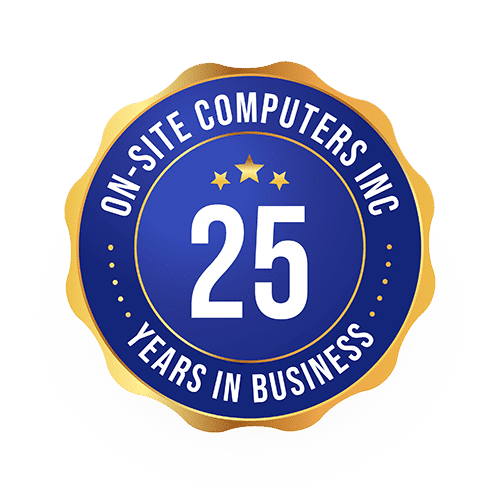Strategies for Construction Managers: Boosting Collaboration and Communication in Diverse Teams
Effective collaboration and communication among diverse teams have contributed to a project’s success in today’s rapidly evolving construction industry. Construction managers are often tasked with coordinating the efforts of various specialists, each bringing their unique perspective and expertise to the table. These teams may include architects, engineers, contractors, and workers from diverse cultural and ethnic backgrounds. To facilitate a smooth collaboration and maintain open lines of communication, construction managers must implement practical strategies and continuously adapt to the dynamics of the project.
One essential aspect of enhancing collaboration in construction projects is establishing clear communication channels that are inclusive and accessible to all team members. By ensuring the right information reaches the appropriate team members promptly, construction managers can avoid most of the communication-related challenges common in diverse teams. Also, fostering teamwork and encouraging creative problem-solving can contribute to better collaboration and stimulate innovation.
Effective performance monitoring and feedback systems are crucial for construction managers, as they can help identify areas for improvement and align team efforts with project goals. Integrating new technologies and leveraging external networks and partnerships can further support construction managers in finding creative solutions, sharing knowledge, and driving success in collaborative project environments.
Key Takeaways
- Effective communication channels are crucial for successful collaboration in diverse teams.
- A teamwork-oriented environment stimulates innovation and problem-solving.
- Performance monitoring, technology integration, and leveraging networks can support successful collaboration.
Establishing Clear Communication Channels
Developing a Communication Plan
A well-crafted communication plan is vital for construction managers to streamline communication and ensure everyone is on the same page. Start by identifying the stakeholders and their specific communication needs. Clarify the channels and frequency of communication. For instance, emails can be used for formal communication and instant messaging apps can be used for quick updates. Create a clear set of guidelines for communication, including response times and escalation plans. Distribute the plan to all team members and ensure they are familiar with it.
Utilizing Technology for Connectivity
Leverage technology to facilitate seamless communication among diverse teams. Encourage using project management tools like Asana or Trello for better task organization and delegation. Use instant messaging apps like Slack or Microsoft Teams to enable real-time conversations. Cloud-based file storage systems, like Google Drive or Dropbox, can significantly improve document and file sharing, leading to efficient collaboration.
| Tool | Purpose |
|---|---|
| Asana | Project Management |
| Trello | Task Organization |
| Slack | Instant Messaging |
| Google Drive | Cloud File Storage |
| Microsoft Teams | Collaboration & Communication |
Regular Meetings and Check-ins
Establish a cadence for regular meetings and check-ins to discuss project updates, concerns, and any additional support needed. This allows for timely issue resolution and fosters a sense of team cohesion. Depending on the project size and complexity, daily stand-ups, weekly meetings, or biweekly calls can be scheduled. During these meetings, encourage open and honest conversations to ensure any potential problems are addressed promptly. Remember to document meeting minutes and distribute them to all team members so everyone is on the same page.

Enhancing Teamwork and Coordination
Team Building Activities
Team building activities are critical in improving collaboration and communication among construction team members. These activities can range from icebreakers and group discussions to more involved events like team outings and workshop sessions. Below are examples of team-building activities to consider:
- Icebreaker Games: Simple games that help team members to get to know each other better.
- Workshop Sessions: Structured sessions focusing on teaching a specific skill or addressing challenges specific to the construction industry.
- Team Outings: Informal events like picnics, sports events, or volunteering opportunities.
Cross-functional Workgroups
Cross-functional workgroups (or multidisciplinary teams) involve team members from various departments or specialties collaborating on a specific project or task. In the construction setting, this can mean bringing architects, engineers, field workers, and safety personnel together to develop innovative solutions to complex construction challenges.
| Benefits of Cross-functional Workgroups |
|---|
| Improved Communication |
| Increased Innovation |
| Greater Understanding of Team Roles |
| Enhanced Problem-solving Skills |
Conflict Resolution Strategies
Conflicts are inevitable in any work setting, including construction teams. Construction managers must develop and implement effective conflict resolution strategies to enhance collaboration and communication. Some recommended conflict management approaches include:
- Clear Communication: Address conflicts early by encouraging open communication between team members.
- Active Listening: Ensure all parties feel heard and understood during conflict resolution discussions.
- Seeking Solutions: Work together to find a mutually beneficial resolution.
- Establishing Clear Expectations: Set ground rules for team members to avoid future conflicts.
Cultural Competence and Diversity Awareness
Inclusive Leadership Training
Construction managers must invest in inclusive leadership training for themselves and their team members. This training focuses on understanding the significance of:
- Considering diverse perspectives
- Building trust among team members
- Encouraging open communication
Inclusive leadership training enhances collaboration by fostering an environment where every team member feels valued and respected. The table below summarizes essential aspects of inclusive leadership.
| Training Component | Objective |
|---|---|
| Active Listening | Improve understanding and empathize with different perspectives |
| Conflict Management | Resolve issues constructively by considering diverse viewpoints |
| Coaching Skills | Empower team members by providing guidance and constructive feedback |
Understanding Cultural Differences
Construction managers must be aware of cultural differences and how they may affect team communication and collaboration. Having this understanding enables managers to create strategies that consider varying dynamics. Some key cultural dimensions include:
- Individualism vs. collectivism
- Power distance
- Uncertainty avoidance
- Communication styles
Managers must facilitate discussions among team members to identify and address differing cultural values. Conducting cultural awareness workshops can be an effective method for this learning.
Promoting Respectful Work Environments
A respectful work environment is crucial for effective collaboration among diverse teams. Construction managers should implement policies and practices that ensure respect and dignity for all team members. Key interventions include:
- Clear communication: Establish a common understanding of expectations and priorities.
- Active feedback: Encourage team members to share their experiences and concerns about the work environment.
- Zero tolerance for discrimination: Implement strict policies against discrimination or harassment and ensure proper reporting mechanisms.
Performance Monitoring and Feedback Loops
Setting Performance Indicators
For construction managers aiming to enhance collaboration and communication among diverse teams, it is essential to establish key performance indicators (KPIs) to measure success. These indicators should be specific, measurable, achievable, relevant, and time-bound (SMART criteria). Examples of KPIs for construction projects include:
- On-time project completion rate
- Budget variance or overrun
- Number of safety incidents
- Quality control metrics
- Team satisfaction and engagement indicators
Managers can foster a shared understanding of project goals, expectations, and accountability by aligning the team’s efforts with these KPIs.
Real-time Feedback Systems
Implementing real-time feedback systems is crucial for construction managers seeking to promote team collaboration and adapt to evolving project requirements. These can take the form of digital platforms or communication tools that allow team members to quickly report updates, address issues, and share ideas. Utilizing such systems, construction teams can benefit from:
- Improved information flow and reduced lag times
- More timely decision-making
- Greater transparency and trust among team members
- Increased awareness of interdependencies, risks, and opportunities
Ultimately, real-time feedback mechanisms promote efficiency, agility, and a more proactive approach to problem-solving.
Continuous Improvement Processes
Embracing a culture of continuous improvement is especially beneficial for construction managers working with diverse teams. By incorporating feedback loops into project management processes, managers can identify areas for improvement, implement corrective actions, and adapt to changing circumstances. Some standard methodologies for continuous improvement include:
- Plan-Do-Check-Act (PDCA): This iterative four-step model encourages teams to identify issues, test solutions, review their effectiveness, and adapt their approach.
- Kaizen: This Japanese philosophy focuses on making small, incremental improvements over time, avoiding complacency, and promoting long-term growth.
Project Management Best Practices
Agile Methodology
Agile Methodology provides a flexible and adaptive approach for construction project managers to enhance collaboration and communication among diverse teams. This method is beneficial in managing complex projects with multiple stakeholders. Key practices within Agile Methodology include:
- Iterative process: Breaking down the project into smaller, manageable tasks allows quicker adjustments and improved communication.
- Regular stand-up meetings: Conduct daily or weekly meetings with team members to discuss project status, potential challenges, and ideas for improvement.
- Adaptive planning: Continually reassess project plans, updating them based on current conditions and team input.
Risk Management Planning
Effective risk management planning is essential for managing diverse teams. By identifying potential risks and developing appropriate mitigation strategies, construction managers can prevent delays and promote a smooth project execution. Key aspects of risk management planning include:
- Identifying potential risks: Analyze project plans to identify possible risks, such as supply chain disruptions, labor shortages, or adverse weather conditions.
- Assessing risk impact: Evaluate the likelihood and potential impact of identified risks on project timelines and costs.
- Developing mitigation strategies: Implement measures to minimize risk occurrences and their impact on the project.
- Regularly reviewing and updating the risk management plan: Continually reassess risks and mitigation strategies, making necessary adjustments as the project progresses.
Resource Allocation Efficiency
Improving resource allocation efficiency is crucial for managing diverse teams in construction projects. Managers can minimize project delays and enhance team collaboration by optimizing the use of personnel, equipment, and materials. Strategies for efficient resource allocation include:
- Resource leveling: Balancing workloads among team members to avoid overburdening some while underutilizing others.
- Cross-functional teams: Encourage team members with different skill sets to collaborate, fostering knowledge sharing and collaborative problem-solving.
- Just-in-time procurement: Coordinate material deliveries to minimize storage requirements and reduce the risk of damage or loss.
These best practices in Agile Methodology, risk management planning, and resource allocation efficiency can help construction managers enhance collaboration and communication among their diverse teams.
Legal and Ethical Considerations
Compliance with Laws and Regulations
Construction managers must comply with all applicable laws and regulations to ensure smooth collaboration and communication among diverse teams. This includes obtaining necessary permits, adhering to safety standards, and complying with labor laws.
For instance, construction managers must be aware of the following:
-
-
-
-
- Occupational Safety and Health Administration (OSHA) regulations for a safe working environment.
- State and local building codes for proper construction techniques.
- Environmental protection laws to minimize pollution and waste.
-
-
-
Abiding by these regulations keeps projects on track and fosters an environment of trust and respect among team members.
Ethical Standards and Reporting
In addition to legal compliance, construction managers should uphold high ethical standards and foster an environment that encourages reporting of unethical behavior. This includes:
- Implementing a Code of Conduct that outlines acceptable behaviors and actions for all team members.
- Encouraging responsible reporting of instances where these standards may be violated, such as harassment, discrimination, or any other breaches in professional ethics.
- Providing anonymous reporting channels to protect whistleblowers from retaliation.
- Developing clear procedures for addressing any violations or conflicts that arise.
Promoting these ethical principles and providing appropriate support can help construction managers improve collaboration and communication within diverse teams, ultimately leading to successful project outcomes.
Professional Development and Training
Upskilling and Reskilling Programs
Investing in upskilling and reskilling programs is essential for construction managers to enhance collaboration and communication among diverse teams. Continuous learning creates a shared knowledge base and develops a common language among team members. It also encourages open dialogue and curiosity, which fosters better communication.
Some examples of upskilling and reskilling programs for construction teams include:
- Technical training: Improve team members’ understanding of relevant software, tools, and instruments used in the industry.
- Soft skills development: Focus on workshops covering effective communication, conflict resolution, and teamwork.
- Cross-functional exposure: Provide opportunities for team members to learn about other departments or roles within the organization, promoting interdisciplinary collaboration.
Certifications and Workshops
Equipping team members with relevant certifications and organizing regular workshops can increase competency and confidence. This enhancement helps facilitate smoother communication and collaboration among diverse teams in the construction industry.
Some popular certifications and workshops for construction professionals include:
- Project Management Professional (PMP): This globally recognized certification ensures that professionals can effectively lead and direct projects. PMP-certified team members are knowledgeable in project management concepts, which fosters better collaboration within the team.
- LEED Accredited Professional (LEED AP): The Leadership in Energy and Environmental Design (LEED) credential demonstrates advanced knowledge in green building practices. LEED APs are valuable assets in promoting sustainable construction and can facilitate impactful discussions among team members.
- Workshops: Organize workshops tailored to address specific challenges the construction team faces. Topics may include effective documentation and reporting, leadership, and diversity and inclusion training.
Prioritizing professional development and training can help construction managers enhance communication and collaboration among diverse teams, ensuring a successful project outcome. The process helps develop a shared understanding, boost team morale, and create an environment for continuous learning and improvement.
Leveraging External Networks and Partnerships
Industry Collaborations
Construction managers can enhance collaboration and communication by actively seeking industry collaborations. Partnering with industry organizations, such as construction associations and trade bodies, enables the exchange of knowledge and best practices with peers from diverse backgrounds. Moreover, participating in conferences and networking events creates opportunities for informal discussions and relationship-building.
Establishing joint ventures or consortium agreements with other construction firms is an effective tactic. This fosters collaboration on specific projects while providing unique learning experiences. Furthermore, it exposes team members to different perspectives and encourages the adoption of innovative approaches.
Community Engagement
Another critical strategy to promote collaboration and communication is through community engagement. Actively involving the local community in the planning and construction process can lead to higher trust, support, and cooperation among stakeholders. Construction managers should consider the following engagement methods:
- Community meetings and workshops: Organize regular meetings and workshops to discuss project milestones, address concerns, and share progress updates. This exchange of information helps improve communication between the construction team and the community.
- Social media: Establish a presence to keep stakeholders updated on project developments. This platform also provides a forum for two-way conversations and quick feedback.
- Local partnerships: Collaborate with local businesses and organizations to create job opportunities or support community initiatives, fostering goodwill and a shared sense of purpose.
Innovative Approaches and Technology Integration
Integrating innovative approaches and technologies can enable efficient collaboration and communication among diverse construction teams. This not only improves their performance but also fosters a collaborative work environment.
Adopting New Construction Technologies
The adoption of new construction technologies can provide a significant boost to communication and cooperation among diverse teams. Building Information Modeling (BIM), for example, allows various stakeholders to share and collaborate on project details. It is a visual representation of the project, which can be updated in real time, allowing all team members to access updated information and prevent miscommunication.
Mobile applications have also emerged as essential tools for project management and communication. These apps provide a platform for teams to share project updates, track progress, and assign tasks efficiently. Examples of these apps include Procore, PlanGrid, and Fieldwire. Mobile apps improve communication, keeping everyone on the same page and reducing errors.
Moreover, virtual reality (VR) and augmented reality (AR) can give an immersive experience of the construction site without being physically present, thus enhancing team communication and collaboration. This can be particularly helpful for remote coordination and discussion of complex aspects of projects.
Data Analytics in Construction
Incorporating data analytics into construction management can support collaboration and communication among diverse teams. With the help of the Internet of Things (IoT), construction sites can gather data from various sources, such as wearable technology, equipment tracking, and material monitoring. This data collection allows teams to easily evaluate project progress and make informed decisions.
Predictive analytics can forecast construction risks, identify patterns in performance, or determine potential areas of improvement. By integrating data analytics, teams can better understand their project’s data and communicate more effectively.
Additionally, dashboards can be utilized for real-time data visualization, which helps teams stay informed and make decisions quickly. This type of visualization can be beneficial for managers to keep track of various aspects of projects, as well as identify areas that require attention.
Conclusion
The construction industry often faces challenges in managing diverse teams to achieve project success. To enhance collaboration and communication, construction managers can adopt several key strategies. This includes leveraging technology, establishing clear communication channels, and implementing team-building activities. These components play a crucial role in bridging the gap and fostering a seamless workflow within diverse teams.
- Technology: Incorporating various construction management software and tools into the project workflow can significantly improve collaboration. For example, using BIM (Building Information Modeling) and cloud-based platforms ensures accessibility to crucial project details.
- Communication Channels: Establishing an open environment for communication is vital. This includes regular meetings, use of appropriate messaging platforms, and providing guidance on effective communication norms.
- Team-Building Activities: Encouraging team integration is necessary for enhancing collaboration. Activities such as workshops, training sessions, and team outings can be organized to break cultural barriers and enable better understanding among team members.
By employing these strategies, construction managers can harmonize their diverse teams to work in sync and achieve continued project success. This proactive approach ensures a healthy work environment and fosters a culture of clear communication and mutual understanding between all team members.






